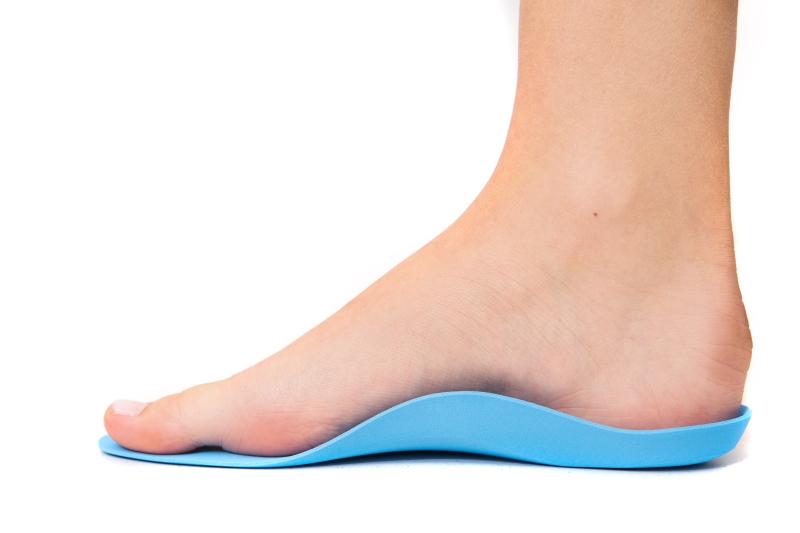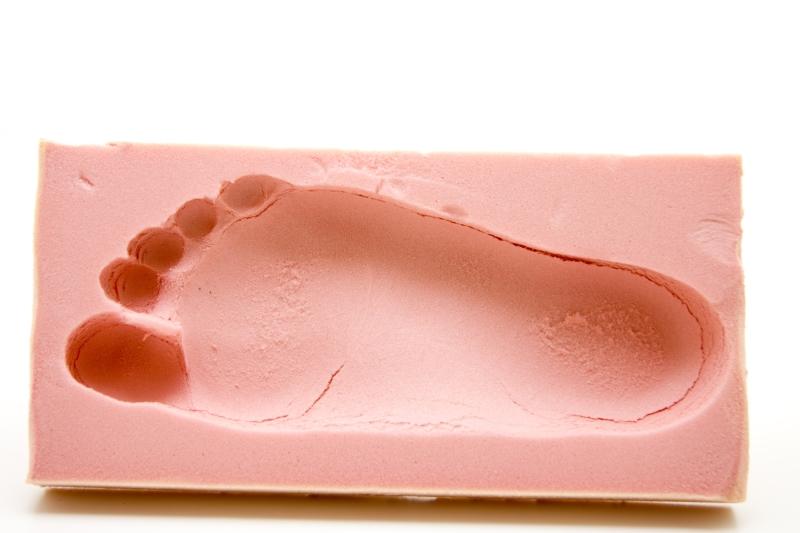Choose a heading from below
- Plantar Fasciitis
- What are the symptoms of Plantar Fasciitis?
- What are the common causes of Plantar Fasciitis?
- What other complaints can look similar to Plantar Fasciitis?
- What home treatments can you try before attending a podiatry consultation?
- What treatments can our podiatrists provide for Plantar Fasciitis?
- What treatment should I book if I have problems with Plantar Fasciitis?
- FAQ Plantar Fasciitis
Plantar Fasciitis
Plantar Fasciitis is a common painful condition often experienced in the heel and or arch particularly first thing in the morning and after prolonged rest periods.
What are the symptoms of Plantar Fasciitis?
- Inflammation and pain are experienced on the bottom of the foot in the heel, arch and sometimes on the inside of the ankle area.
- Pain often gets worse after getting up in the morning or after sitting/resting
- Progressive pain in bottom of foot
- Tightness in the bottom of the foot particularly in the arch
What are the common causes of Plantar Fasciitis?
- Flat or high arched feet
- Faulty foot biomechanics e.g. feet that do not function correctly or efficiently when walking or running
- Differences in the limb length
- Not wearing sufficiently supportive footwear or very poor footwear, especially women’s fashion footwear, pumps and flip flops
- Cheap, old or inadequate sports footwear
- Occupations that require long periods of standing
- Obesity or weight gain
- Tight calf muscles and weaknesses in the muscles of the feet
What other complaints can look similar to Plantar Fasciitis?
- Capsulitis
- Plantar Fibromatosis
- Heel Spur syndrome
- Arthritis of the sub talor joint
- Fractures of the heel
- Tendonitis/ Tendonosis
- Tibialis posterior dysfunction
What home treatments can you try before attending a podiatry consultation?
- Pain killers such as paracetamol
- Cold compresses or ice, wearing a foot sleeve (available from large pharmacies), elevation of the foot/feet to rest
- Using a foot roller to stretch the plantar fascias (available from some pharmacies)
- Wear supportive sensible footwear – avoid high heels
- Avoid going barefoot until you’ve seen a podiatrist
- If this type of pain is ongoing or recurring it needs a professional podiatry assessment and diagnosis
What treatments can our podiatrists provide for Plantar Fasciitis?
- Firstly our podiatrists will perform a physical examination and give you a diagnosis, not all pain in the heel is caused by plantar fasciitis
- Expert strapping if needed
- Exercises to strengthen and correct the feet and lower legs under the guidance of a HCPC registered podiatrist
- Specific footwear advice to avoid worsening and prevent future occurence
- Biomechanical Assessment to find the exact postural causes of your pain.
- Footwear modifications
- Foot orthoses ranging from off the shelf, semi bespoke and tailor made orthoses, further information on foot orthoses can be found here
- Cortisone (steroid) injections can be administered by our fully qualified and experienced podiatrists, this is however rarely needed.
- Acupuncture
- Referral for X-ray or bone scan via an orthopaedic surgeon in severe or unresponsive cases
What treatment should I book if I have problems with Plantar Fasciitis?
If you are suffering from Plantar Fasciitis or have symptoms that sound similar to those described above you are recommended to book one of the following appointments:
- Podiatry consultation
- Biomechanical assessment (if a more extensive assessment and custom made orthoses are required)
- Running gait analysis (if you are predominantly a runner)
FAQ Plantar Fasciitis
Can Plantar Fasciitis be cured with a Steroid Injection?
Steroid Injections, often called cortisone injections, are essentially an injection of an anti inflammatory agent (often combined with an anesthetic for pain relief) into an inflamed tissue or region to reduce pain, swelling and inflammation.
Common sites for injection of a steroid are the plantar fascia, inflamed joints, bursa and the area around inflamed tendons.
Steroid injection can be useful for pain relief of Plantar Fasciitis but this type of treatment does not address the actual cause of the complaint and so it will often return if the steroid injection is not combined with other treatments such as exercises and foot orthoses. It is not uncommon for our podiatrists to see patients that have had 2-3 steroid injections with their GP and are still suffering from pain from Plantar Fascitiis.
Common causes of plantar fasciitis, for example are tight muscles or flattening of the foot arch, these are normally addressed with an exercise program and foot orthoses.
Our podiatrist tend to prefer to use steroid injections as a last resort or if an individual complains of severe pain and cannot tolerate a foot orthoses as a first line treatment.
It is not uncommon for an individual to require more than one steroid injection.
Can I wear high heels if I have Plantar Fasciitis?
Plantar Fasciitis is often caused by tight calf muscles, therefore if the heels are raised with a high heeled shoe some of the tension can be taken off the Plantar Fascia and therefore pain levels can reduce.
This is not the ideal scenario though as it is purely masking the problem, the best form of treatment is to actually stretch the tight muscles that are causing the problem.
There are often other causes of Plantar Fasciitis such as flattening of the feet and so the recommendation is to see a HCPC registered Podiatrist to have a thorough assessment. In this way all the possible causes of the Plantar Fasciitis will be address and recovery from this painful condition is likely to be quicker.
Is it good to wear flip flops, sandals or go barefooted with this condition?
Flip flops, sandals, pumps and going barefooted are often the reason Plantar Fasciitis develops in the first instance. The above footwear offer the foot very little support and so place great tension on the plantar fascia and increase pain in this area.
If Plantar Fascitis is diagnosed by our podiatrists we recommend to wear support footwear with a slight heel and avoid going barefooted.
As a compromise to flip flops a large number of our patients have found the brand Fit Flops beneficial when experiencing pains associated with plantar fasciitis



















